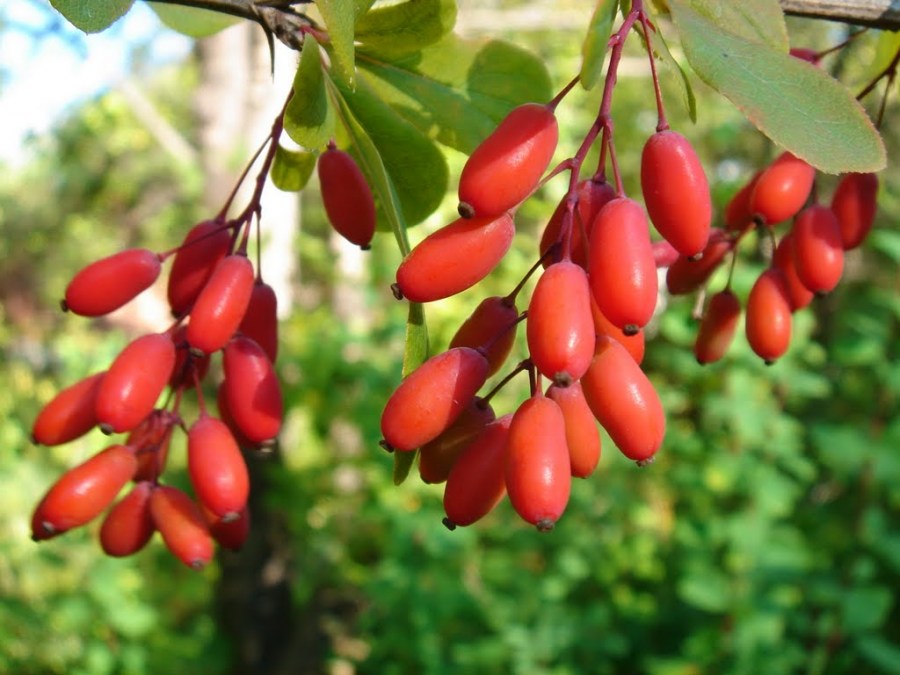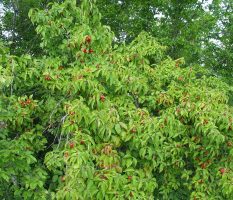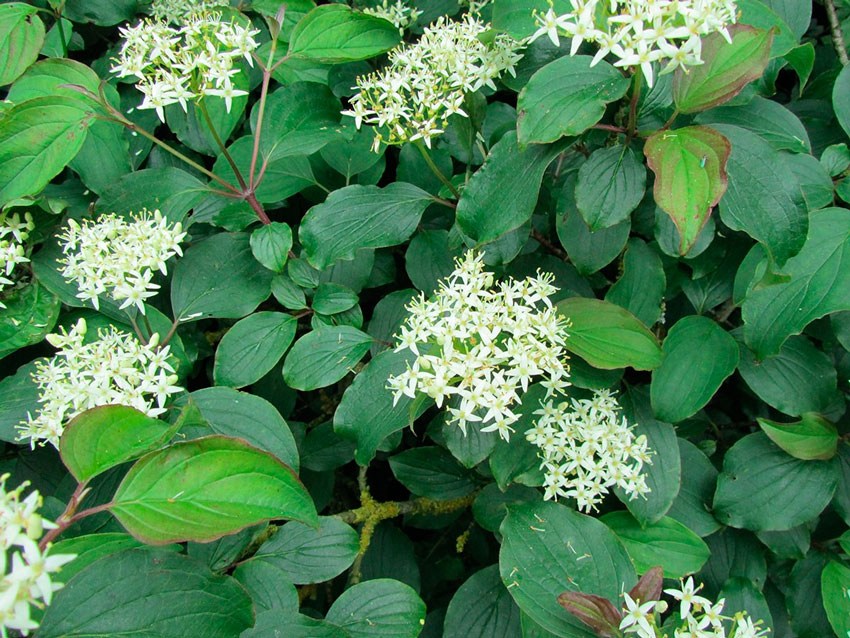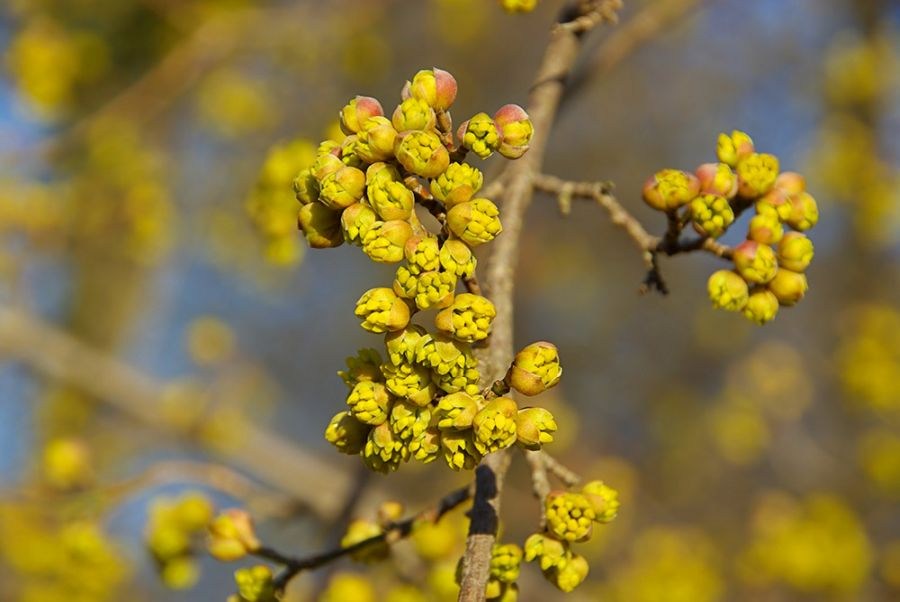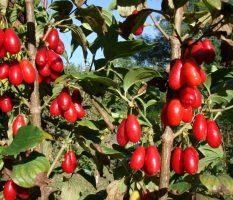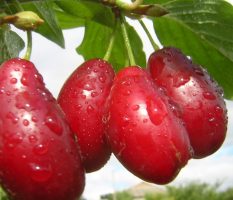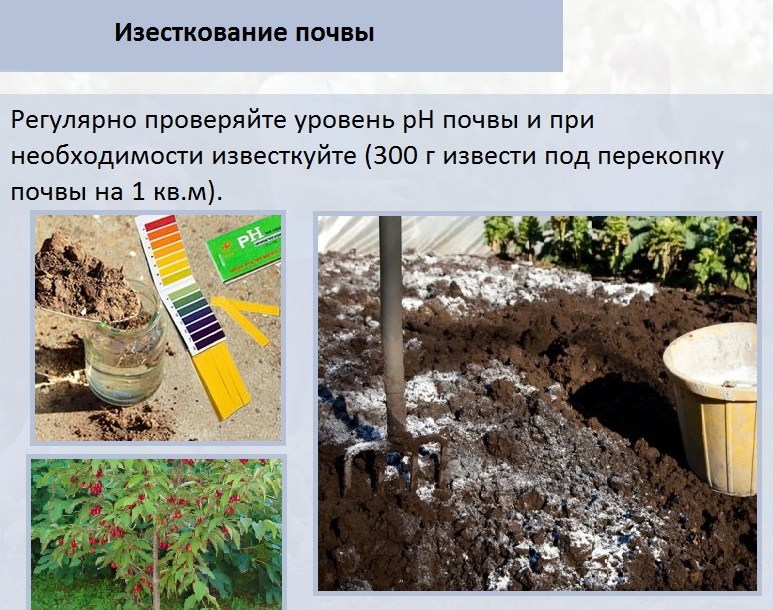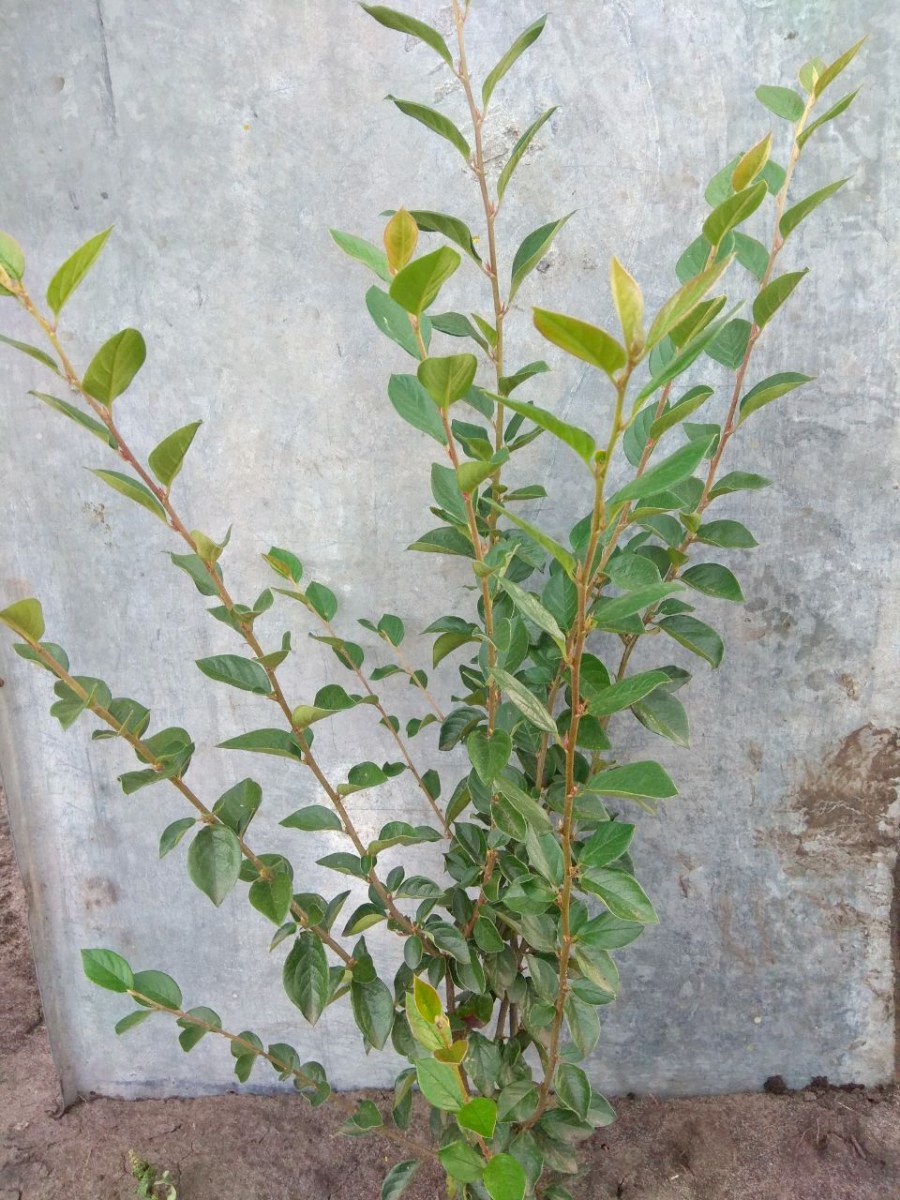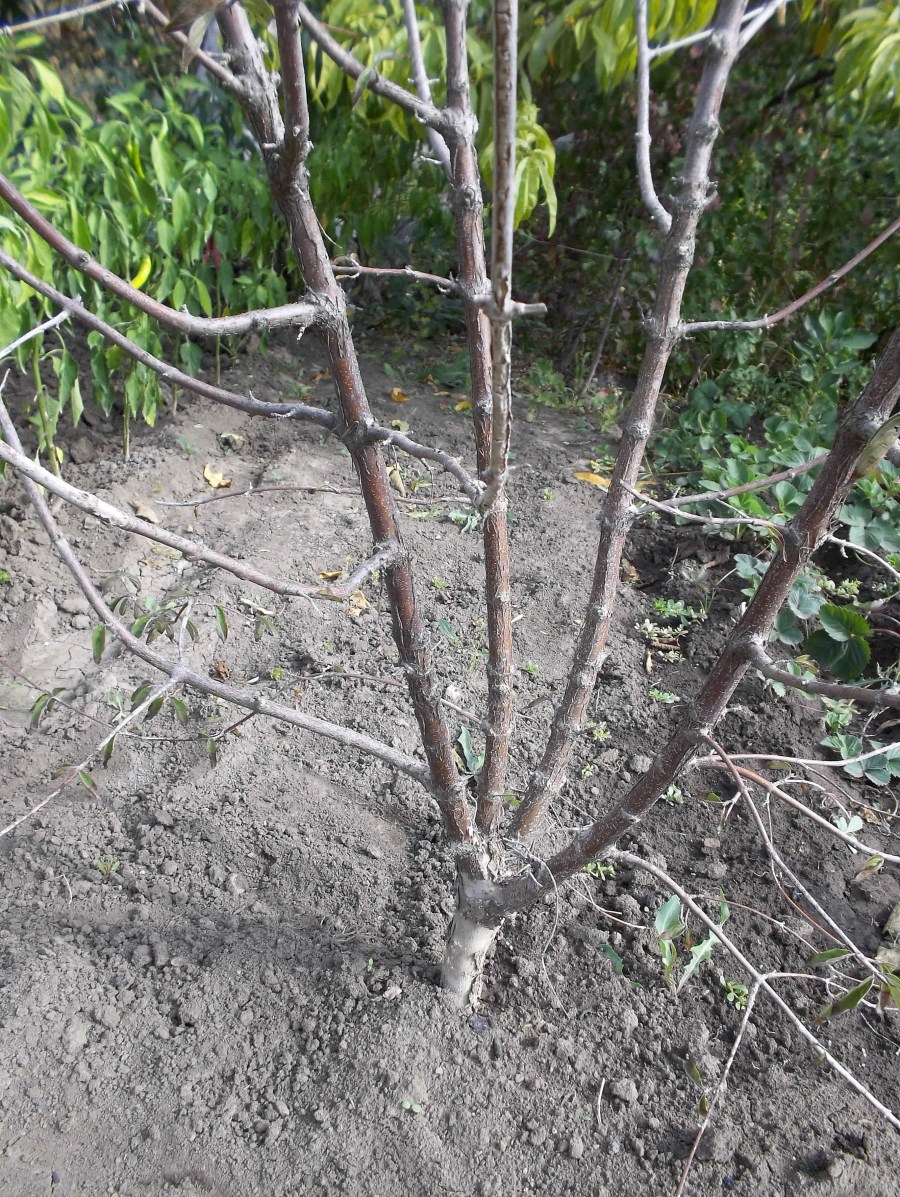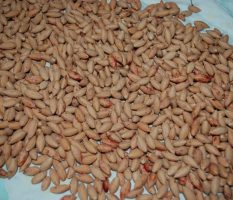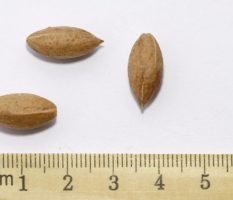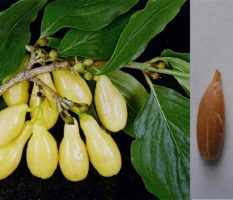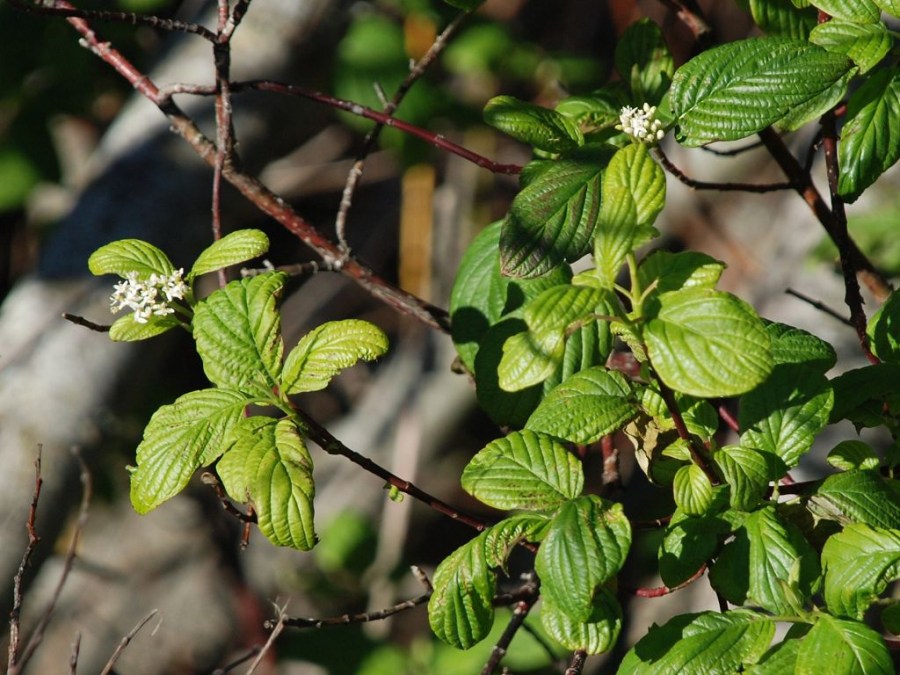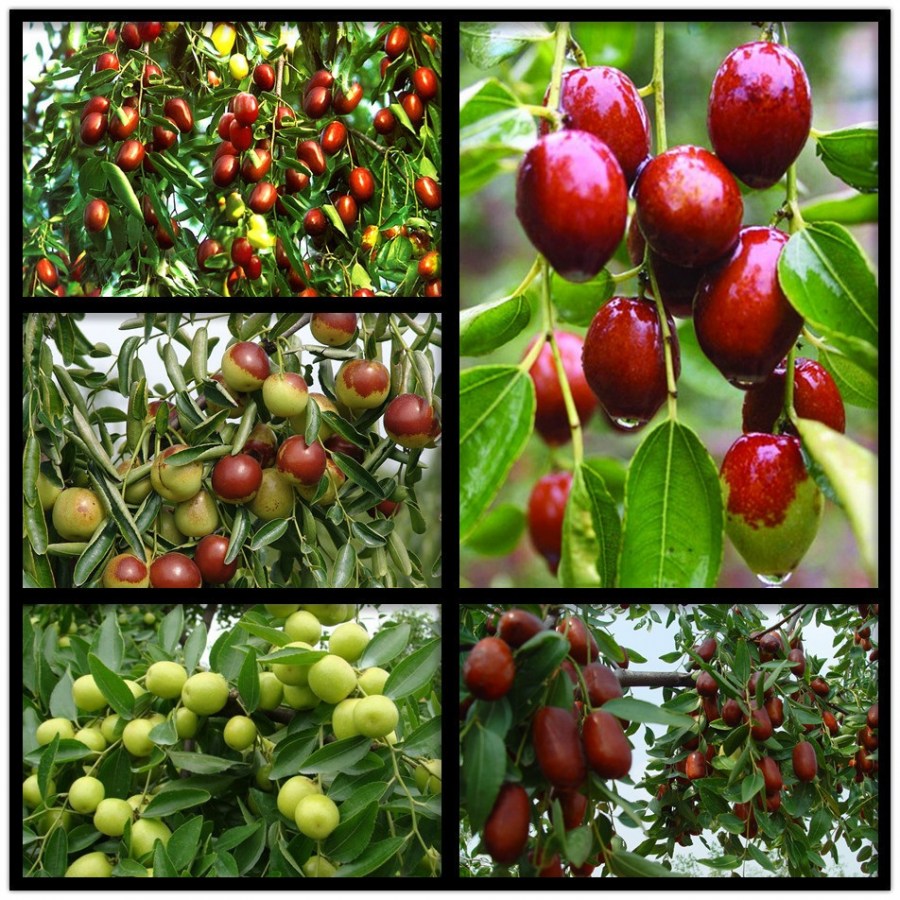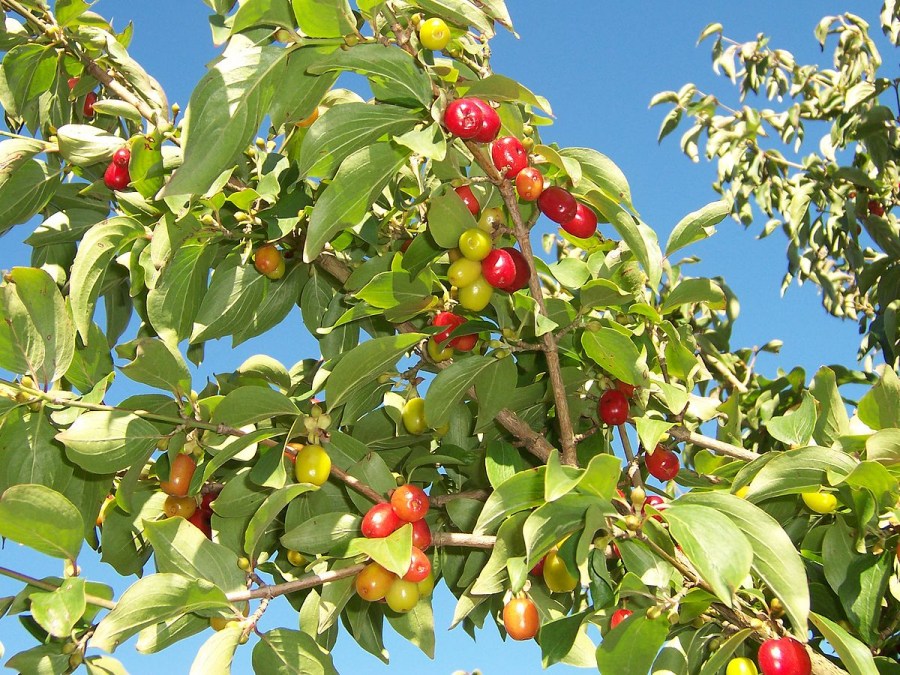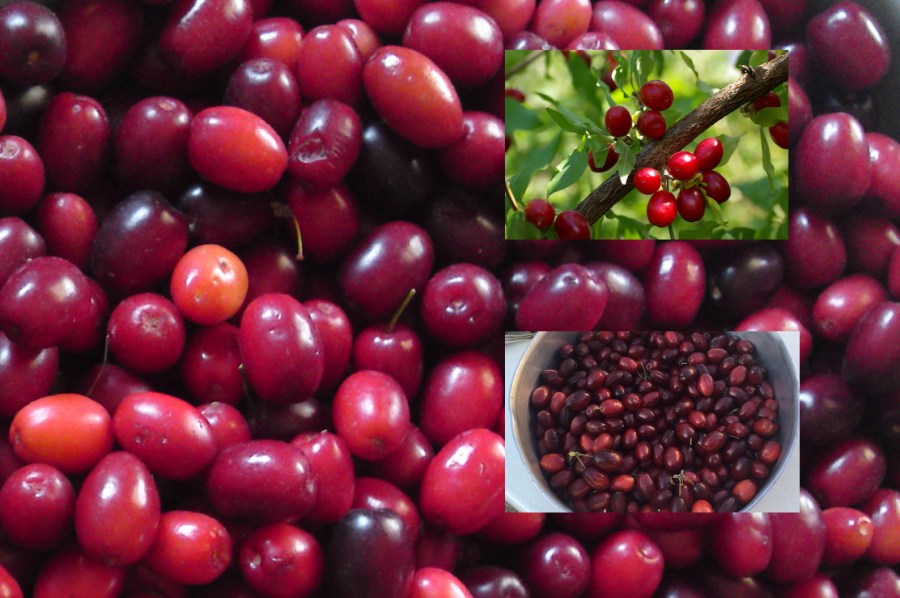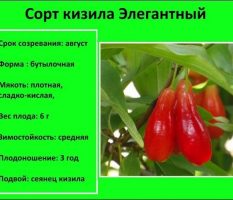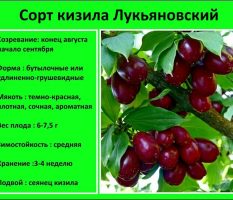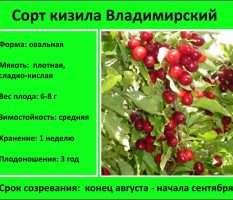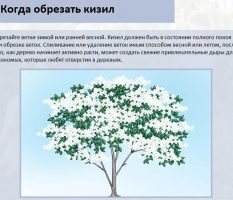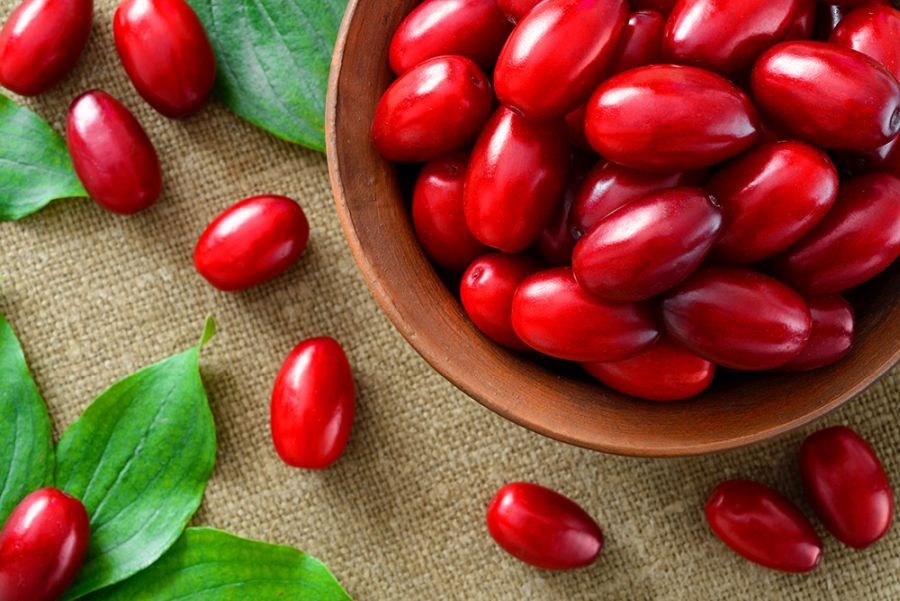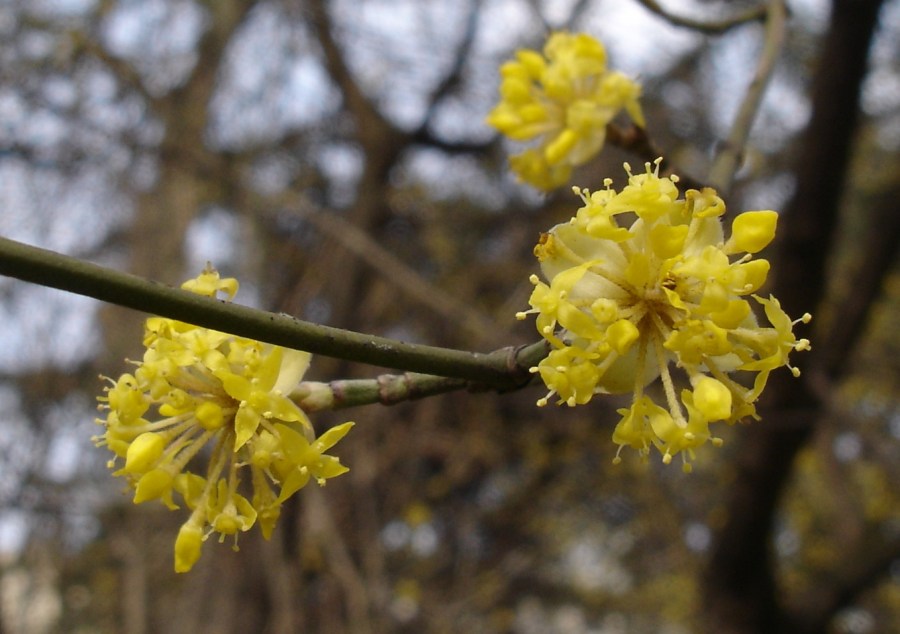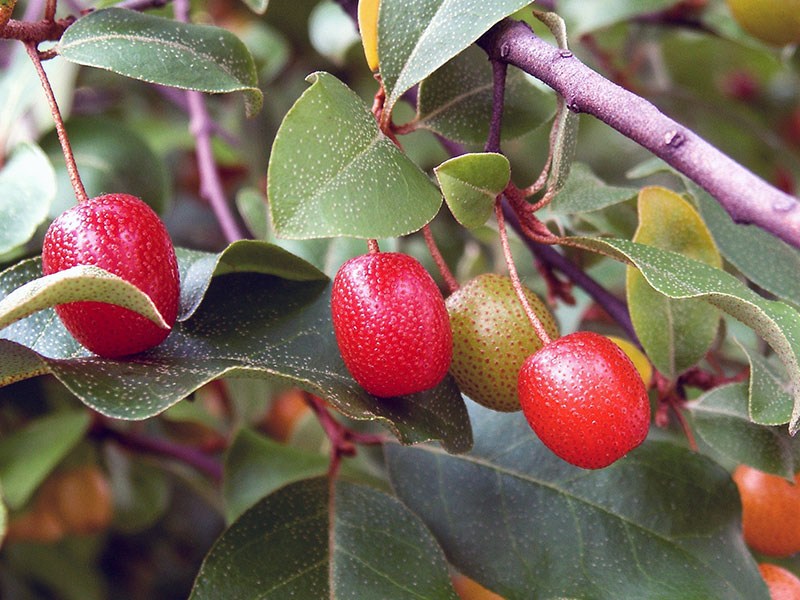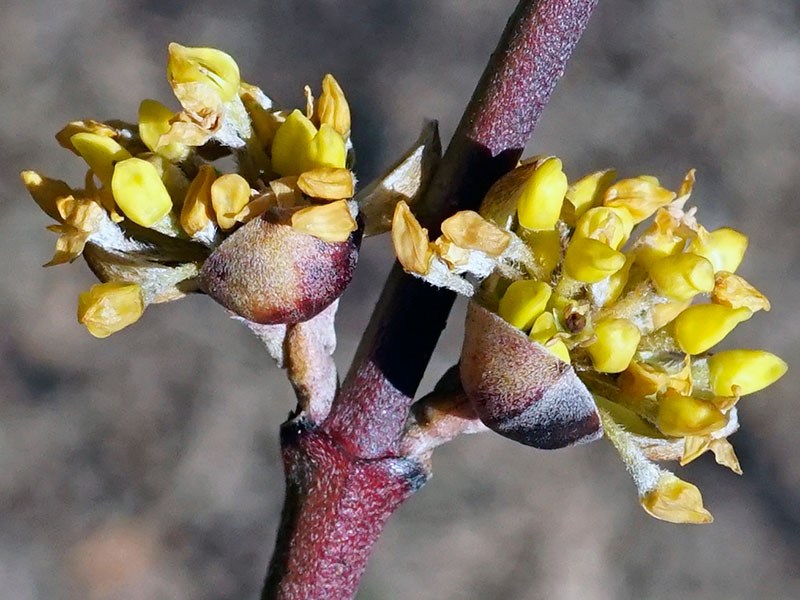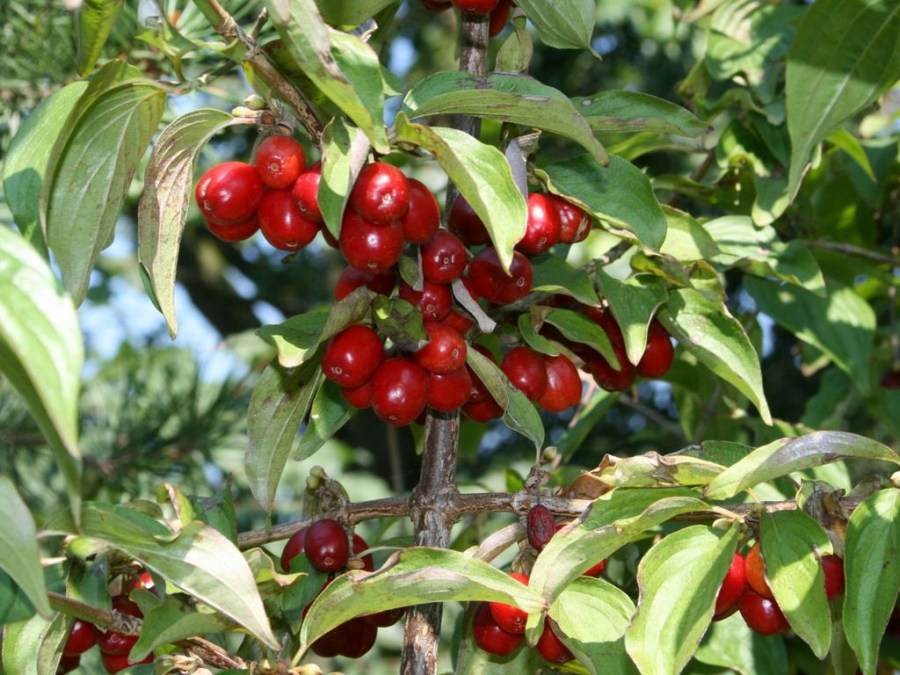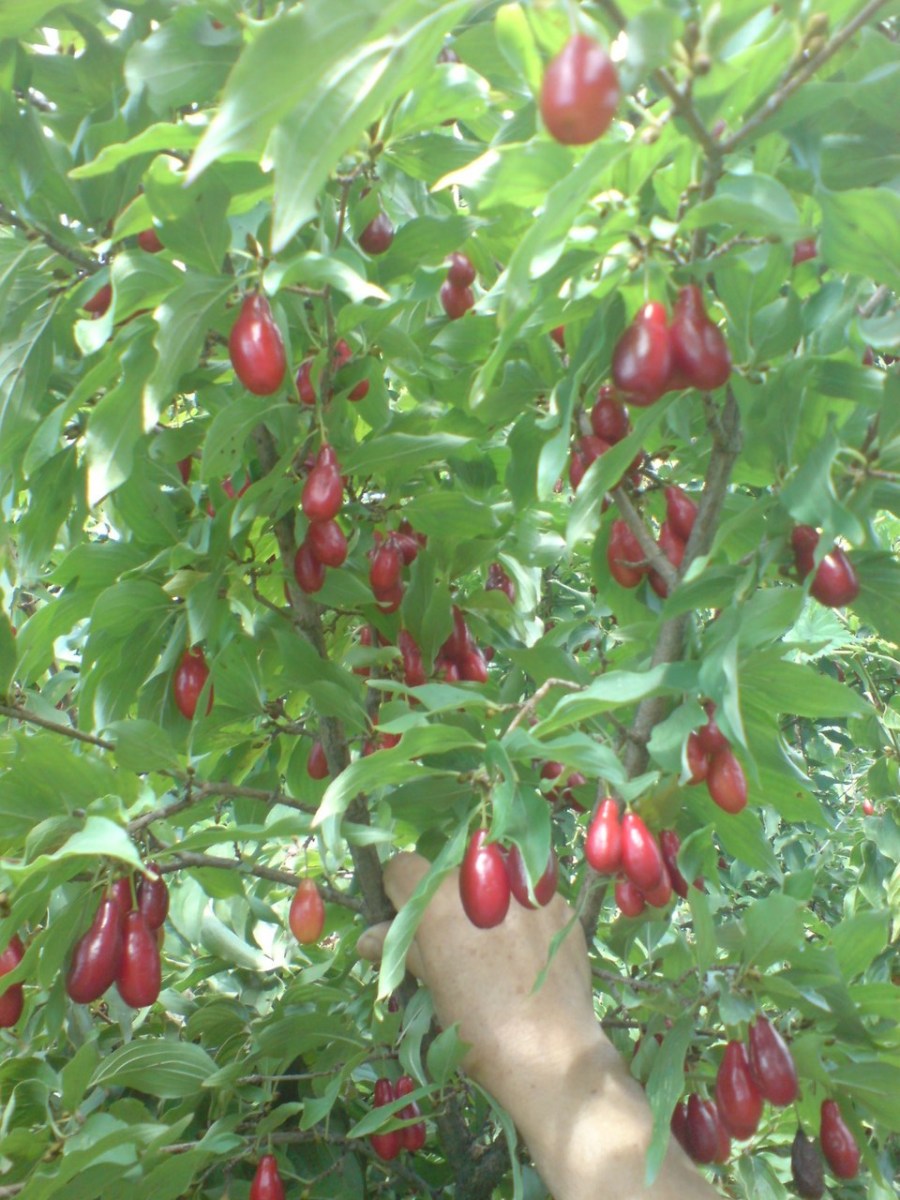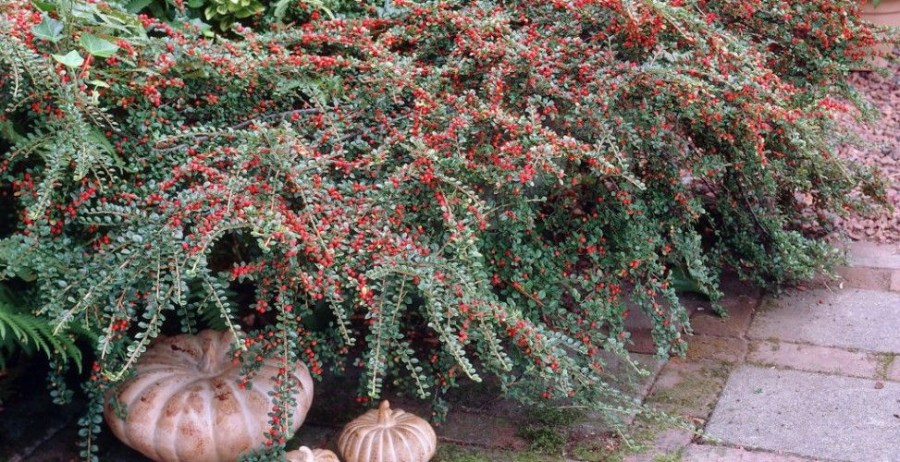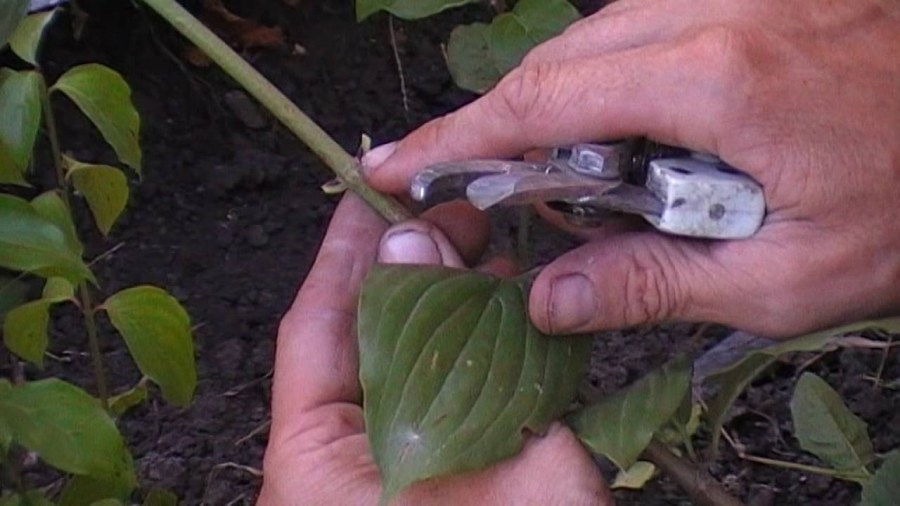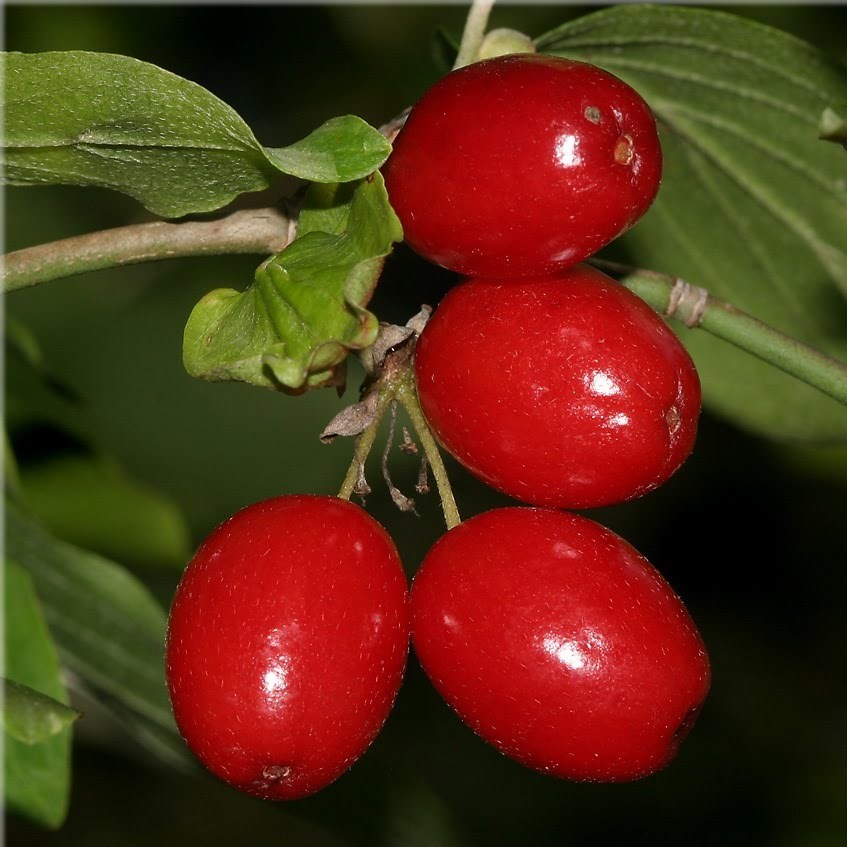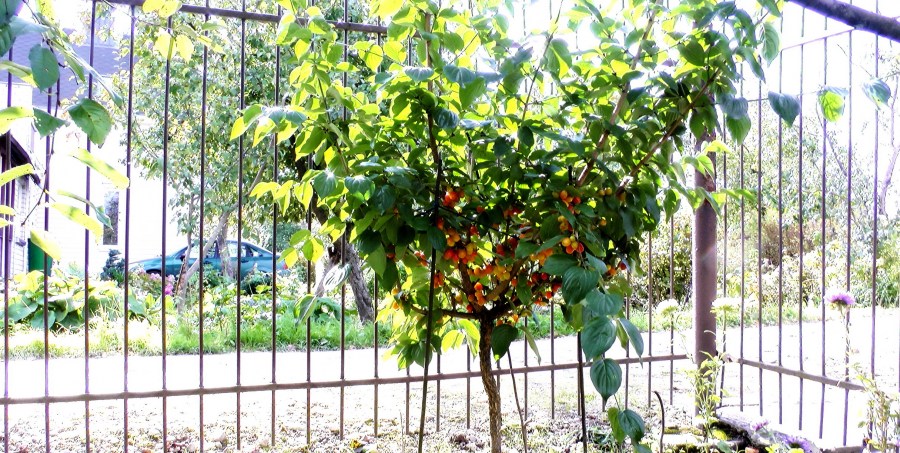Dogwood - benefits and harm to humans. Simple instructions for growing and caring at home (110 photos)
It is very difficult to confuse the sweet and sour taste and aroma of dogwood jam with other cooked sweets from homemade fruits. This jam is familiar to us since childhood. Mums and grandmothers always brought a small bucket of berries from the Caucasus, Crimea or the Kuban to cook flavored jelly or jam, dry for compote or eat small tart fresh fruits of the tree.
However, modern dogwood varieties successfully grow not only in the south, but also in areas located much north of the warm regions. Therefore, it is worth paying attention to this not only useful, but also a decorative tree.
Dogwood General Information
Dogwood - a small and sprawling tree or shrub that gives healthy and tasty berries with a small seed (photo of dogwood). Cultivation of culture began more than 5 thousand years ago. Dogwood in translation from the Turkic dialect means "red", however, modern hybrid varieties give orange, yellow, purple and even black fruits. Dogwood is a long-liver. Many trees give excellent harvests even after 100 years.
In the gardens of the Caucasus, trees reach up to 8 m in height, in the Crimean steppes the plants are shorter - they are about 3 m in height. Young branches of dogwood are green, sometimes with a yellowish tinge. Later they acquire a brown or brown color.
What does dogwood look like? In early spring - this is the most beautiful and elegant tree in the garden. Flowering lasts about 2 weeks. Yellow, white or pink lush inflorescences resemble sun hats and look very impressive against other unblown trees.
Dogwood bloom begins earlier than the blossoming of the leaves - the petals of the inflorescences crumble at the beginning of their appearance. Dogwood buds, which give fruit, have a spherical shape in yellow, leaf buds are elongated and green.
Dogwood is a frost-resistant tree and calmly tolerates 30 degree frosts. Dogwood leaf fall is late, depending on weather conditions, it can begin from the first of November.
Dogwood Landing and Care
Fruits dogwood annually. Dogwood productivity depends on many factors: from the variety, planting location and age, and ending with the presence of another dogwood in the neighborhood. Since the tree belongs to cross-pollinated plants, it is necessary to provide the varietal tree with a neighborhood of wild-growing dogwood, which also bears fruit, or another dogwood.
Where is it better to plant a dogwood? The tree prefers sunny areas with a small partial shade. Extreme heat all day depresses him.
As for the soil, dogwood can grow on any soil, but prefers calcareous soil with a sufficient level of manganese. Unsuitable soil for planting is soil with stagnant groundwater or a dense clay layer of the earth.
For planting, 2 and 3 summer plants can be used. It is important that the selected seedlings have at least 3 formed side shoots.
The transplant is normally tolerated by older trees, but with the only condition: before digging, the seedling must be cut. Such trees begin to bear fruit in a year. Dogwood can be planted in early spring or autumn 2-3 weeks before the start of stable frosts.
Approximately 7-9 days before planting, the seedling should be prepared for the planting pit. It is desirable to lay organic and mineral fertilizers in it.To do this, it is recommended to use the following components:
- about 1 bucket of humus;
- 60-70 g of ammonium nitrate;
- 250 superphosphate and wood ash each;
- part of lime.
Pour everything abundantly with settled water. For a week, the landing pit is saturated with fertilizers and will be suitable for receiving cornel seedlings. Immediately before planting, the pit should again be filled with water. Then, a hole should be made around the planted tree, and the seedling itself should be tied to a support.
After rooting, dogwood care comes down to very simple and familiar actions, like other fruit crops. This is a regular loosening of the earth near the trunk, elimination of weeds, watering as necessary and the removal of dried or damaged twigs.
Dogwood positively responds to mulching with shredded fresh or dry grass, wood sawdust. Typically, the crown of a tree does not require forming pruning, but a thick weave of branches needs thinning.
Plant nutrition
A tree needs only 2 obligatory annual top dressings. One should be carried out at the beginning of summer, the second - approximately in the middle of autumn. The first feeding should consist of mullein diluted with water in a ratio of 1 to 5 or bird droppings, also diluted with water (1:10).
Autumn soil fertilizer usually consists of wood ash and superphosphate. It is carried out after harvesting and helps the tree regain strength before wintering.
How does a tree breed?
Dogwood can be propagated in three ways:
- The seeds. This method of reproduction is necessary for growing stocks. Usually the seeds germinate 2 or 3 years after sowing. Dogwood trees obtained from seeds also produce fruits, but do not retain the characteristics and valuable characteristics of the variety;
- Vegetative way. In garden nurseries, they often use the method of rooting with green twigs. Specialists root dogwood cuttings in a substrate of river sand and peat (the mixture is prepared in a 1: 1 ratio).
- Rooting cuttings is necessary in the spring in mid-May. Keep the cuttings in a film greenhouse and monitor the optimum soil moisture. Already in autumn, young dogwood can be transferred to the open ground;
The best and most reliable way to get a new plant is to bud on the wild seedlings with a shield.
Some gardeners use the method of propagation by layering. They press the stem of the mother bush to the ground and weight it with a layer of moist soil. Thus, the formation of roots and, as a result, the emergence of a new seedling are stimulated. After a year, the young dogwood can be separated and planted in another place.
With the seed method of propagation, the tree begins to bear fruit for 6-7 years, the vegetative method of propagation allows you to see the fruits already for 2-3 years.
The most famous and popular varieties of dogwood
Vladimirsky - characterized by a stably high annual crop and large berries. Frost-resistant and unpretentious dogwood variety.
Delicate - yellow berries with delicate sweet flesh. High palatability remains even when preserved.
Elegant - dark cherry fruits have a bottle shape. A distinctive feature is that the crop not collected on time does not fall off the tree. Early grade.
Exotic - large-fruited tree with a good and stable harvest.
What are the pests and diseases of dogwood
With favorable care, regular watering varietal dogwood trees are rarely exposed to any diseases and pests. But sometimes powdery mildew appears on the leaves of young plants, which can be eliminated with a fungicide. Also, sometimes there is such a problem as the settlement of pathogenic fungi on tree branches. Regular pruning of damaged or dry branches will help to cope with fungi.
The benefits of cornel berries
Dogwood fruits are an excellent source of vitamin C, E, a variety of micro and macro elements necessary for a person. The berries of the plant normalize metabolic processes in the body, relieve inflammation, have a bactericidal and astringent effect.
The beneficial properties of berries support human immunity, improve digestion, promote weight loss and normalize blood pressure.
Dogwood photo
A blind area around the house - 110 photos of ideas for creating a blind area with your own hands
Feng Shui plot - 110 photos of ideas for creating natural harmony
Hacksaw: 70 photos and an overview of the most reliable hand tools
Garden sprayer: 90 photos of different types of spraying equipment
Join the discussion:
